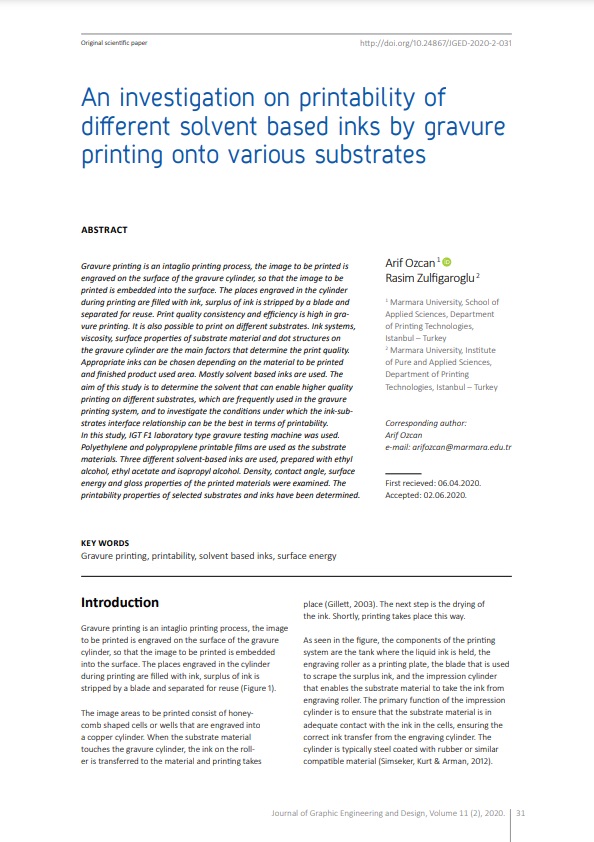An investigation on printability of different solvent based inks by gravure printing onto various substrates

Published 2020-12-01
abstract views: 503 // Full text article (PDF): 532
Keywords
- Gravure printing,
- printability,
- solvent based inks,
- surface energy
How to Cite
Copyright (c) 2020 © 2020 Authors. Published by the University of Novi Sad, Faculty of Technical Sciences, Department of Graphic Engineering and Design. This article is an open access article distributed under the terms and conditions of the Creative Commons Attribution license 3.0 Serbia.

This work is licensed under a Creative Commons Attribution 3.0 Unported License.
Abstract
-
Gravure printing is an intaglio printing process, the image to be printed is engraved on the surface of the gravure cylinder, so that the image to be printed is embedded into the surface. The places engraved in the cylinder during printing are filled with ink, surplus of ink is stripped by a blade and separated for reuse. Print quality consistency and efficiency is high in gravure printing. It is also possible to print on different substrates. Ink systems, viscosity, surface properties of substrate material and dot structures on the gravure cylinder are the main factors that determine the print quality. Appropriate inks can be chosen depending on the material to be printed and finished product used area. Mostly solvent based inks are used. The aim of this study is to determine the solvent that can enable higher quality printing on different substrates, which are frequently used in the gravure printing system, and to investigate the conditions under which the ink-substrates interface relationship can be the best in terms of printability. In this study, IGT F1 laboratory type gravure testing machine was used. Polyethylene and polypropylene printable films are used as the substrate materials. Three different solvent-based inks are used, prepared with ethyl alcohol, ethyl acetate and isopropyl alcohol. Density, contact angle, surface energy and gloss properties of the printed materials were examined. The printability properties of selected substrates and inks have been determined.


